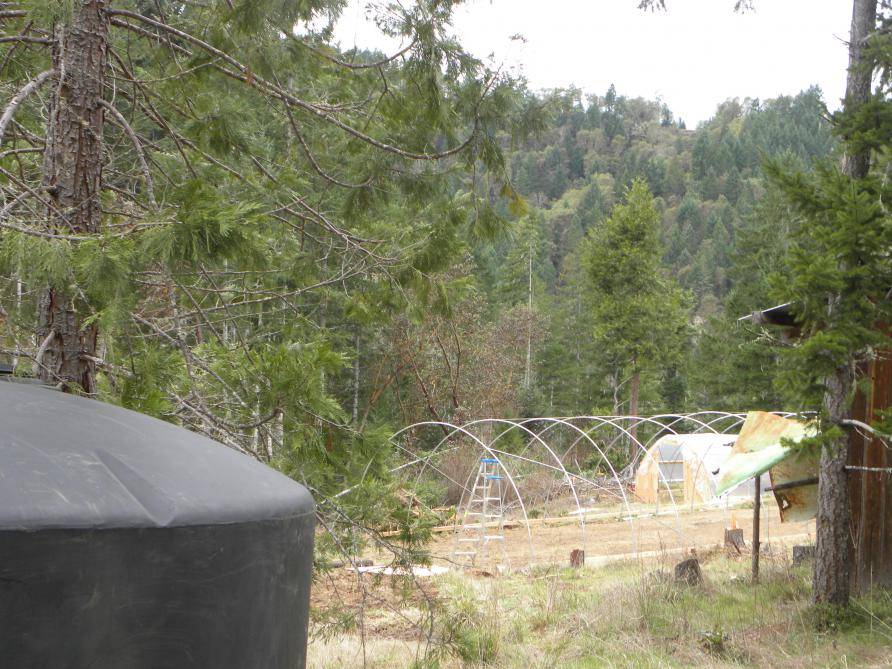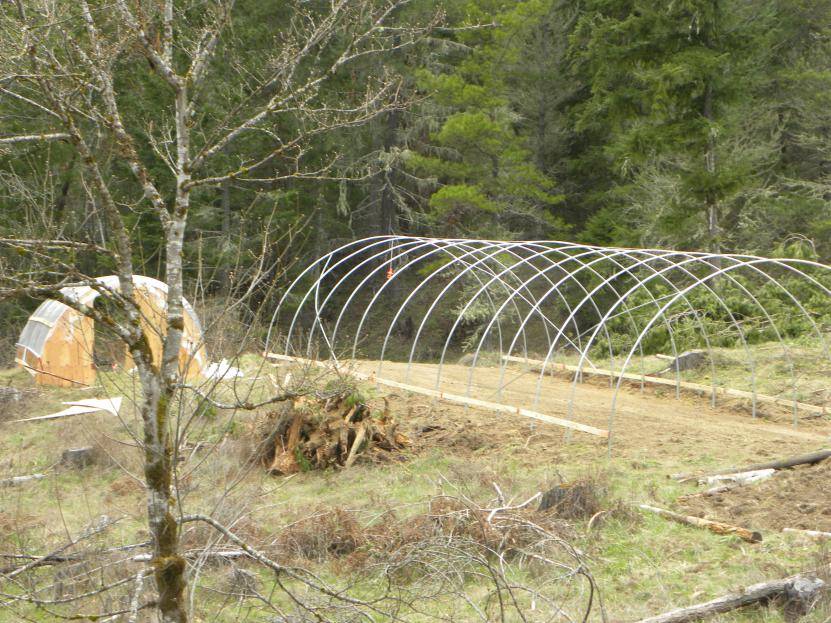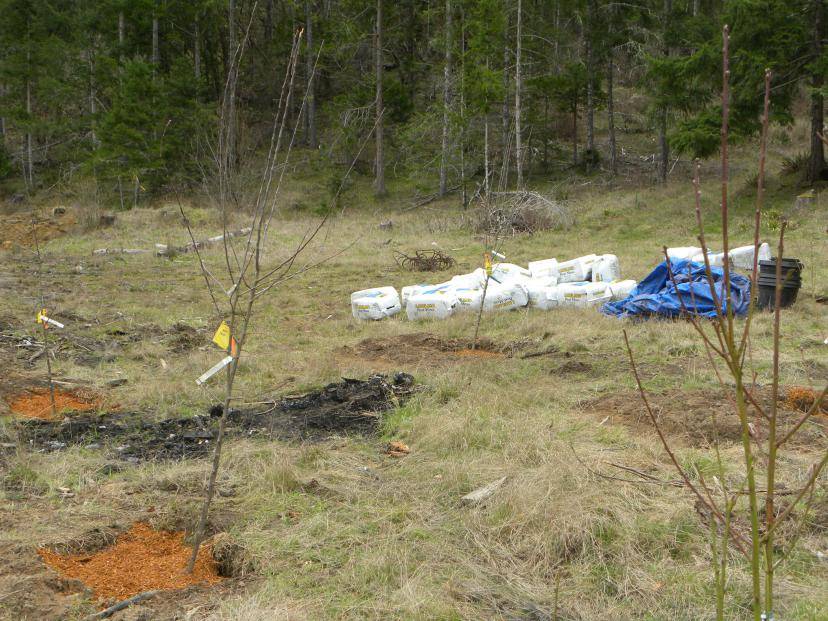al-k-mist
Member
We just bought the farm, literally. It is just a valley off of the willamette valley.
Building greenhouses, and giant no-till beds. We just planted 2 dozen blueberry bushes, 14 fruit trees, 5 tea plants. We broke up the soil in a 25 X 25 area, and thats all the tiling that will bee done.( uploading pics we took today, right now...how do i get them all big in the thread)
150-200 gallon beds in one greenhouse, like 12 of them, maybe more, but 12 cannabis plants..no more moving, so they wont move either, just be ammended
I really have learned a whole lot here, and look forward to learning more, and sharing with you as our farm growz
she has started many tomato varieties, peppers, lettuce, peppermint, chamomille, fennel, dill, broccolli(3 kinds) basil...and were just getting started, no implements, recent surgery, and an infant son. Awayyy we go!
Oh, we thought the greenhouses were going to be over there, which is why that pile of peat bales is by the orchard now...gonna move it over to the greenhouse area when we mix the soil next week, got 6 yds of peat, 4 of pumice, a ton of ammendments, literally(crab meal, kelp, sulpomag, neem seed meal, basalt dust, oyster shell flour...much more
[/url]

 https://www.icmag.com/ic/picture.php?albumid=40747&pictureid=1035151
https://www.icmag.com/ic/picture.php?albumid=40747&pictureid=1035151
Building greenhouses, and giant no-till beds. We just planted 2 dozen blueberry bushes, 14 fruit trees, 5 tea plants. We broke up the soil in a 25 X 25 area, and thats all the tiling that will bee done.( uploading pics we took today, right now...how do i get them all big in the thread)
150-200 gallon beds in one greenhouse, like 12 of them, maybe more, but 12 cannabis plants..no more moving, so they wont move either, just be ammended
I really have learned a whole lot here, and look forward to learning more, and sharing with you as our farm growz
she has started many tomato varieties, peppers, lettuce, peppermint, chamomille, fennel, dill, broccolli(3 kinds) basil...and were just getting started, no implements, recent surgery, and an infant son. Awayyy we go!
Oh, we thought the greenhouses were going to be over there, which is why that pile of peat bales is by the orchard now...gonna move it over to the greenhouse area when we mix the soil next week, got 6 yds of peat, 4 of pumice, a ton of ammendments, literally(crab meal, kelp, sulpomag, neem seed meal, basalt dust, oyster shell flour...much more
[/url]


 wit mines back in the og days.anyways rant off
wit mines back in the og days.anyways rant off thanx guys for sharing and teaching those of us willing to listen i
thanx guys for sharing and teaching those of us willing to listen i  to u all.!
to u all.!
